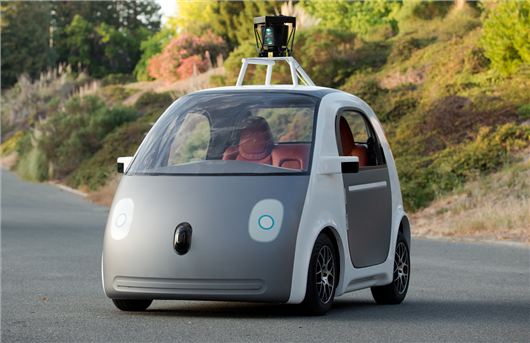Comment: Are you ready for a self-driving car?

In order to drive, a human being needs to be able to see, hear and feel – and to be able to process that information and feed it back into the car through the steering wheel and pedals. Essentially a self-driving car does exactly the same job, but it uses sensors and computers in place of brains, eyes, hands and feet.
Modern cars already have plenty of sensors and computers, reading distances with radar, pinpointing locations with GPS and even detecting lane markings on the motorway. Self-driving cars like those being developed by Google take these familiar technologies and evolve them into something far more advanced.
The Google self-driving car uses lasers, orientation sensors, radar and GPS to detect the cars location. These sensors combine to create a virtual version of the world around the car. The car’s processor – or brain – then deciphers the information and makes real-world decisions about acceleration, braking and steering.
These combine with the user-programmed destination and enable the car to navigate safely around cyclists, pedestrians, other cars and changing road conditions. Google’s cars have been programmed to behave like any other car, so other road users can predict what is going to happen next – as they do with other human road users.
Google’s small, two-seater autonomous cars will likely act as a proof of concept, showing the world the prospective benefits of driverless vehicles. A self-driving car will not get tired on a long-motorway trip, nor will it get angry when there’s a traffic jam or a car driving aggressively nearby.
Roadside advertisements or tuning the radio won't cause an autonomous car to get distracted, plus it can be just as aware of what’s going on two miles away as it is of what’s happening directly behind or in front. Because it can receive all of its information simultaneously and make decisions in an instant, it should mean a reduced likelihood of accidents.

Google's cute autonomous car has no steering wheel or pedals
It also has the potential to revolutionise public transport, with self-driving buses and taxis making fewer mistakes and knowing the best route regardless of the time of day or traffic situation. There are some less obvious benefits, too.
Those who live in blocks of flats in busy urban centres could potentially drive home, get out of the car and then send it on its way to find a free parking space somewhere else, before calling it back from their smartphone the next morning. It would also eliminate drink driving.
The technology is, of course, very young. It has to be monitored by people at all times and can be shut down if something goes wrong. When the technology becomes available in car showrooms you can expect the same level of user control.
Self-driving vehicles that are offered for sale to every day car buyers are unlikely to completely take away human control – not to mention the fact that people are unlikely to accept the technology with open arms if there is no steering wheel or pedals.
However, when we go on holiday we think nothing of covering massive distances with an autopilot controlling the plane – in theory, self-driving cars work on the same premise. They should take the drudgery out of long distance motorway slogs or nose-to-tail urban traffic jams, but without taking over entirely unless you really want them to.
Google’s cars might work as simple-to-use devices for taking you to dinner or the shops, but when other manufacturers get on board and start offering autonomous vehicles for sale, they’re more likely use technology to make the boring bits of driving easier – not to remove the owner from the experience of driving entirely.

 John Slavin
John Slavin
 Honest John Awards 2017: Land Rover Discovery Sport named Most Popular SUV for second year in a row
Honest John Awards 2017: Land Rover Discovery Sport named Most Popular SUV for second year in a row
 2022 Smart #1 SUV: price, specs and release date
2022 Smart #1 SUV: price, specs and release date
 2023 Ferrari Purosangue SUV: Prices, specs and release date
2023 Ferrari Purosangue SUV: Prices, specs and release date
 Citroen DS3 Racing revealed
Citroen DS3 Racing revealed
 Infiniti adds diesel to the range
Infiniti adds diesel to the range
 Volvo XC90 chosen as SUV of the year at 2014 Honest John Awards
Volvo XC90 chosen as SUV of the year at 2014 Honest John Awards
 March new car registrations better than expected
March new car registrations better than expected





.jpg)






Add a comment